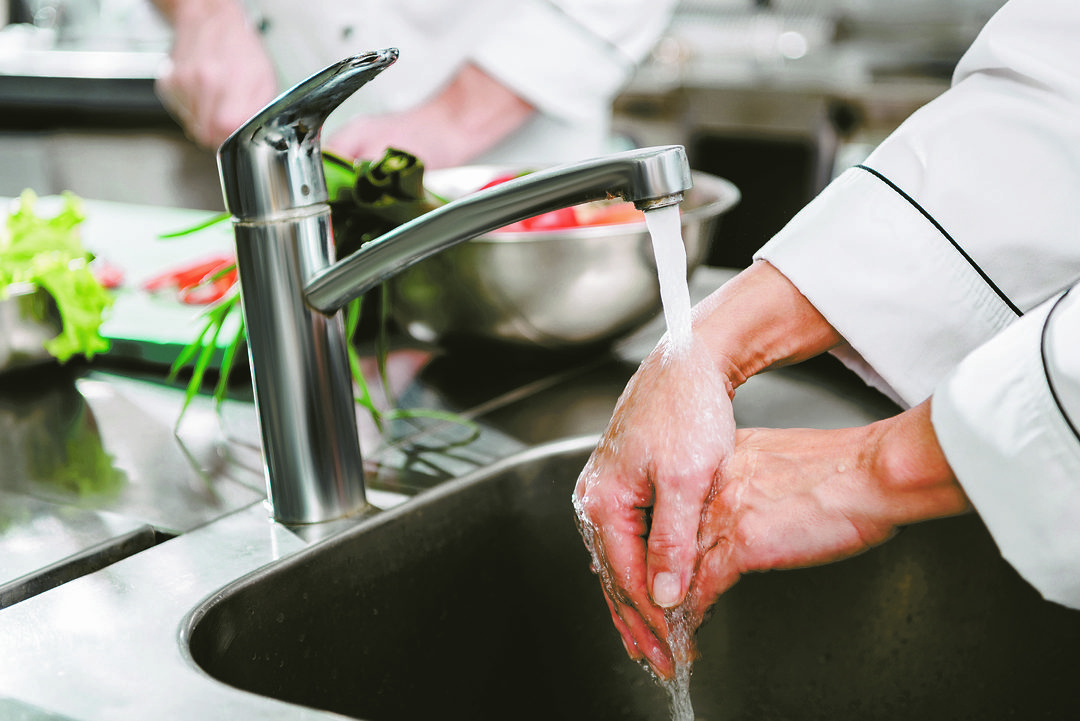High-Efficiency Water Heating for a (Nearly) Post-COVID World
The COVID-19 pandemic accelerated some of the shifts already in motion toward higher-efficiency water heating equipment.

It’s safe to say that the events of the past year changed everything. Under the shadow of the coronavirus, our priorities and routines shifted, whether we liked it or not. We had to adjust the way we do business, whatever our business is. And we all found ourselves doing very familiar things in some very unfamiliar ways. Zoom happy hours? Drive-by birthday parties? We probably won’t miss those.
While some aspects of “life as we knew it” are beginning to return, in slightly altered forms, some things may never quite be the same. And, in the case of how and where we use hot water, that might be a great thing.
Water heating accounts for a large amount of energy consumption and an even larger amount of energy waste. But modern water heating technology can vastly improve the efficiency (and lower the costs) of hot water use. And in an era of heightened sanitization practices, it could mean that high-efficiency water heaters are about to have a moment.
Changing Water Usage in a Changing World
The beginning of the COVID stay-at-home orders saw a sea change in water usage. Almost overnight, there was a shift in daytime water use from largely commercial to largely residential.
According to a University of California study on water usage in San Francisco, in the first five months of shelter-at-home orders (March-July 2020), usage in residential properties increased 32 percent from the previous year; commercial and industrial usage dropped by 22 percent (https://bit.ly/3vV25ku).
But it wasn’t just where water was being used; it was also how much. The initial spike of water use was connected with personal and domestic hygiene: washing groceries, longer and more frequent showers, increased hand-washing and increased clothes laundry. Being home more also meant more cooking — and more washing dishes.
All this adds up to a pretty dramatic increase in water usage in general, but also a marked increase in hot water-intensive activities.
More Water, More Problems
In addition to the ways our everyday lives changed, the impact on businesses has been severe. From supply-chain disruptions to moving workplaces online to entire industries crumbling from the lack of “normal” operations, the COVID-19 pandemic significantly altered the global economy.
Obviously, some businesses and industries saw skyrocketing sales (pretty much anything with “delivery” in their business plan). Still, everyone needed to adjust to new cleaning and sanitization regulations — and the associated costs.
While some sectors saw significant decreases in commercial water usage with empty office buildings and facilities, others saw steep increases. Even though many restaurants were operating at partial capacity or takeout-only, increased hygiene and disinfection practices caused a huge jump in water use.
For obvious reasons, hospitals have seen some of the most drastic increases in hot water usage throughout the pandemic. In general, these changes created a trend toward belt-tightening and considering every penny before it’s spent.
What Goes Up Must Come Down
While the initial surge in hot water usage for cleaning and sanitization calmed down, water usage is still higher than in previous years for all the same reasons. And what else is higher than in previous years? Energy bills.
In commercial settings, this doesn’t just amount to a small inconvenience — it could mean the difference between continued operations and shutting your doors.
As reopening continues, businesses and workplaces are required to follow much stricter federal and local requirements for employee hygiene and workplace sanitization. Under these circumstances, businesses with already high hot water usage have really started feeling the heat.
And with heightened sanitization protocols likely to remain in place for the foreseeable future, even businesses that wouldn’t have previously considered themselves “hot water-intensive” may be open to the double benefits of high-efficiency water heaters: reliable hot water and monthly energy savings.
Good for the Planet, Good for the Wallet — Just Plain Good
Water heaters are something most people never want to think about. But when hot water use starts eating into your business revenue, it’s time to explore how top-of-the-line water heating equipment can bolster the bottom line.
Modern water heaters can be two to three-and-a-half times more efficient than traditional water heating equipment, using up to 70 percent less energy than a standard electric water heater. Those savings can add up quickly in a commercial setting, with equipment that pays for itself within a few years.
Some of the most efficient options are heat pump water heaters, which use proven technology similar to refrigerators to transfer heat from the surrounding air to warm the water in the tank — that’s right, they create hot water out of thin air. If your customers aren’t impressed by that magic trick, they’ll probably be impressed by the trick of the lowered monthly energy bill.
To encourage customers to invest in more efficient water heating equipment, utilities across the state of California are offering generous rebates — including attractive point-of-sale rebates for distributors and instant savings for trade allies (statewide-waterheating.com) — to help businesses level up to qualifying high-efficiency water heaters.
Whether your customers’ hot water usage returns to early-pandemic levels or dips to pre-pandemic levels, you can help them save on high-efficiency equipment for their businesses.




